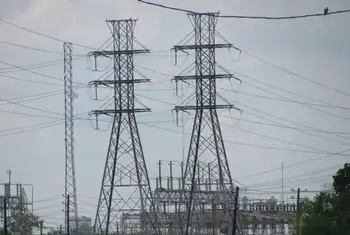Offshore wind industry slowly improving
By United Press International
Protective Relay Training - Basic
Our customized live online or in‑person group training can be delivered to your staff at your location.

- Live Online
- 12 hours Instructor-led
- Group Training Available
Belgian consortium Belwind said it had completed financing for the first phase of a 330 megawatt offshore wind farm in the North Sea. The European Investment Bank granted Belwind a $425 million loan, the company said. A consortium of six companies plans the offshore farm, which would be Belgium's largest. Construction work on 55 3 MW turbines is to start this summer, with the park going online by early 2011, the company said.
This is good news for the offshore wind industry, which has been hit hard by delays and money problems as a result of the financial crisis.
Banks have been axing funding because they have little cash to loan and because they have been put off by insecurities linked to some offshore projects, which often cost several hundred million to a few billion dollars.
While winds at sea are stronger and able to yield higher output, construction costs for offshore wind farms are roughly twice as high because companies need to build an entirely new infrastructure — transformer stations, sea cables — to deliver the power to land.
"Offshore wind has a serious financing problem," Ralf Bischof, the managing director of the German Wind Energy Association, an industry group, said earlier this year in Berlin.
But several projects are now going ahead, boosted in part by money from governments eager to support offshore wind power, seen in European capitals as a key tool to reach the continent's ambitious climate protection and renewable energy targets.
The world's biggest offshore project, the 1 GW London Array, was about to go under when the British government gave it a live-saving shot in the arm.
London in its 2009 budget, released in May, increased the subsidies for offshore wind to $864 million and doubled the number of renewable energy certificates for power from offshore wind.
In Germany, a prestigious 60 MW offshore wind farm project called Alpha Ventus received the go-ahead in June after several years of delay.
Alpha Ventus was initially to go online in 2008 but weather issues delayed a first construction attempt last year. This summer construction has begun with 12 tripod foundations that will hold the turbines to be constructed this summer already installed in the seabed off the German Baltic Sea coast. A company spokesman said the blades will be turning by October.
The decision to build Alpha Ventus was prompted in part by government support. As part of its economic aid package, Berlin handed the offshore industry around $130 million in subsidies. As an additional measure, starting this year, the guaranteed feed-in-tariff for power from offshore wind was boosted to 22 cents per kWh, compared to 13 cents for onshore.











